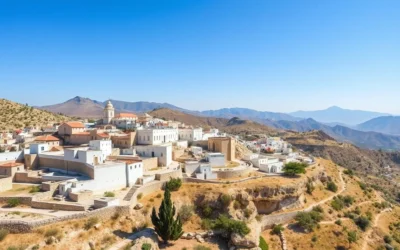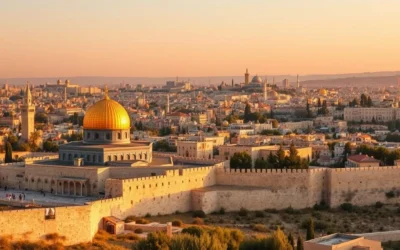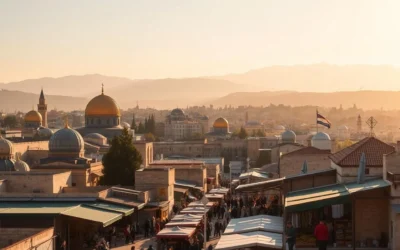Did you know that Nimrod Fortress is the largest medieval castle in Israel, stretching an impressive 420 m (1,378 ft) across a mountain ridge? Perched dramatically on the slopes of Mount Hermon at an elevation of 800 m (2,600 ft), this magnificent 13th-century fortress offers some of the most breathtaking panoramic views in all of Israel. Originally built to guard a major access route to Damascus, today it stands as a testament to the region’s rich and complex history, drawing visitors from around the world to explore its massive walls, secret passages, and ancient towers.
Getting There & Planning Your Journey
Nimrod Fortress National Park is located in the northern Golan Heights, approximately 22 km east of Kiryat Shmona. Its remote location means some advance planning is necessary, but the journey is well worth the effort. The fortress sits on the slopes of Mount Hermon, offering spectacular views of the surrounding landscape and the Hula Valley below.
By Air
The nearest major airport is Ben Gurion International Airport near Tel Aviv, about 220 km southwest of Nimrod Fortress. From there, you have several options to reach the fortress:
- Fly into Tel Aviv and rent a car for the 3-4 hour drive north
- Take a domestic flight to Rosh Pina Airport (near Safed) and then drive about 1 hour
- Consider a connecting flight to Haifa Airport, followed by a 2-hour drive
Find the best flight deals to Israel and start your adventure to Nimrod Fortress National Park.
By Car
Having your own vehicle is highly recommended for visiting Nimrod Fortress, as public transportation options are limited. The drive offers stunning scenery through the Golan Heights:
- From Tel Aviv: Take Highway 6 north, then Routes 77, 90, and finally 99 (3-4 hours)
- From Jerusalem: Take Route 1 to Route 90 north, then Route 99 east (3-4 hours)
- From Tiberias: Take Route 90 north, then Route 99 east (1.5 hours)
- From Kiryat Shmona: Take Route 99 east (30 minutes)
Rent a car to explore Nimrod Fortress and the beautiful Golan Heights at your own pace.
By Public Transport
While more challenging, it is possible to reach Nimrod Fortress using public transportation:
- Take a bus to Kiryat Shmona from major cities like Tel Aviv or Jerusalem
- From Kiryat Shmona, catch Bus 58 heading to El Rom or Majdal Shams
- Get off at the Sayeret Egoz Monument stop, about 1 km from the park entrance
- Be aware that bus service is limited, especially on Fridays and Saturdays
Best Time to Visit & Weather Tips

Recommended Seasons
The best time to visit Nimrod Fortress National Park is during spring (March to May) and autumn (September to November) when temperatures are mild and comfortable for exploring the extensive grounds.
- Spring (March-May): Ideal with temperatures ranging from 15-25°C (59-77°F). The surrounding hills are lush and green, wildflowers bloom, and the views are spectacular.
- Autumn (September-November): Another excellent time with pleasant temperatures between 18-28°C (64-82°F) and clear skies offering stunning visibility across the Golan Heights.
- Winter (December-February): Cooler with temperatures between 5-15°C (41-59°F). Occasional rain and even snow at this elevation. The fortress can be dramatically beautiful in winter, but come prepared with warm clothing.
Seasons to Avoid
While Nimrod Fortress can be visited year-round, there are certain times that may be less ideal:
- Summer (June-August): Temperatures can reach 30-35°C (86-95°F), making exploration of the unshaded fortress uncomfortable, especially during midday hours.
- Rainy Days: The stone pathways can become slippery when wet, and visibility from the viewpoints may be reduced.
- Israeli Holidays: During major Jewish holidays, the site can become crowded with local visitors. Check the Israeli holiday calendar when planning.
What to Pack
- Comfortable walking shoes with good grip for the uneven stone surfaces
- Sun protection (hat, sunscreen, sunglasses) regardless of season
- Water bottle – staying hydrated is essential when exploring the fortress
- Light layers in summer; warm clothing in winter
- Rain jacket if visiting during the winter months
- Camera to capture the spectacular views and architectural details
Getting Around Locally
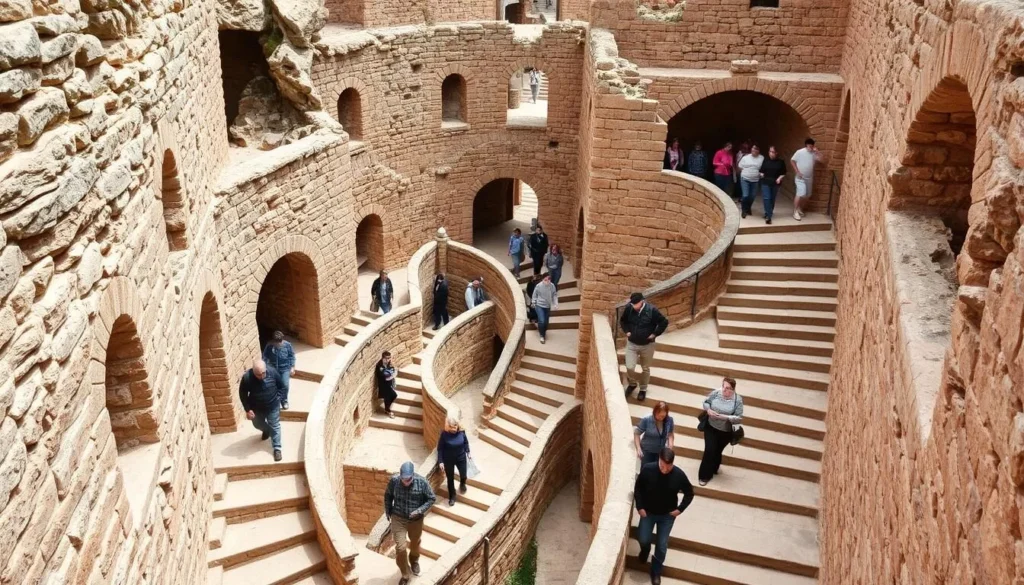
Nimrod Fortress National Park covers a large area with various sections to explore. The site is designed for walking, with pathways connecting the different parts of the fortress. Here’s what you need to know about navigating this historical treasure:
Within the Fortress
- Walking Trails: The entire fortress is explored on foot via stone pathways and steps. The complete circuit is about 1-2 km in length.
- Difficulty Level: Moderate – the terrain includes uneven surfaces, steps, and some steep sections. Proper footwear is essential.
- Accessibility: Limited for those with mobility issues. The Southwest Tower area is accessible via a modern service road, but most of the fortress requires navigating steps and uneven terrain.
- Guided Route: Follow the recommended route provided in the park brochure to ensure you don’t miss key features.
Exploring the Surrounding Area
The Golan Heights region surrounding Nimrod Fortress offers many additional attractions worth exploring:
Nearby Attractions
- Banias Nature Reserve: 10 km away, featuring beautiful waterfalls and ancient ruins
- Mount Hermon: Israel’s highest peak, offering hiking in summer and skiing in winter
- Tel Dan Nature Reserve: Ancient biblical city with lush nature trails
- Golan Heights Winery: Award-winning winery offering tours and tastings
Local Transportation
- Rental Car: The most convenient option for exploring the region
- Taxis: Available from nearby towns but can be expensive
- Organized Tours: Many tour companies offer day trips that include Nimrod Fortress
- Local Buses: Limited service between major towns in the region
Discover the best guided tours of Nimrod Fortress and the Golan Heights region.
Where to Stay

While there are no accommodations within Nimrod Fortress National Park itself, the surrounding Golan Heights region offers a variety of lodging options to suit different preferences and budgets. Here are some recommended places to stay:
Budget Options
- Zimer Al-Bayt: Located 11 km from the fortress, this charming guesthouse offers basic but comfortable rooms with garden views.
- Kibbutz Guesthouses: Several kibbutzim in the area offer affordable accommodations with a unique cultural experience.
- Camping: For the adventurous, there are designated camping areas in nearby nature reserves (permits required).
Mid-Range Options
- Merom Golan Resort: Located 26 km south of the fortress, featuring comfortable rooms, seasonal swimming pool, and beautiful gardens.
- Eretz Dafna Travel Hotel: Just 13 km from Nimrod Fortress, offering clean rooms with AC, buffet breakfast, and peaceful surroundings.
- Pastoral Kfar Blum: A kibbutz hotel with good amenities and a convenient location for exploring the region.
Luxury Options
- Mizpe Hayamim: A luxury spa hotel with organic farm and gourmet restaurant, located about 40 km from the fortress.
- Bayit Bagalil Boutique Hotel: Upscale accommodations with panoramic views, spa facilities, and excellent dining.
- Private Villas: Several luxury vacation rentals in the area offer privacy and premium amenities.
Find and book the perfect accommodation for your visit to Nimrod Fortress National Park.
Recommended Areas to Stay
- Kiryat Shmona: The closest city (22 km) with the most amenities and dining options
- Metula: Israel’s northernmost town with a charming atmosphere
- Rosh Pinna: A picturesque artists’ colony with beautiful stone buildings and boutique accommodations
- Tiberias: If you prefer a larger city with more facilities, Tiberias on the Sea of Galilee is about 1.5 hours away
Dining & Local Cuisine
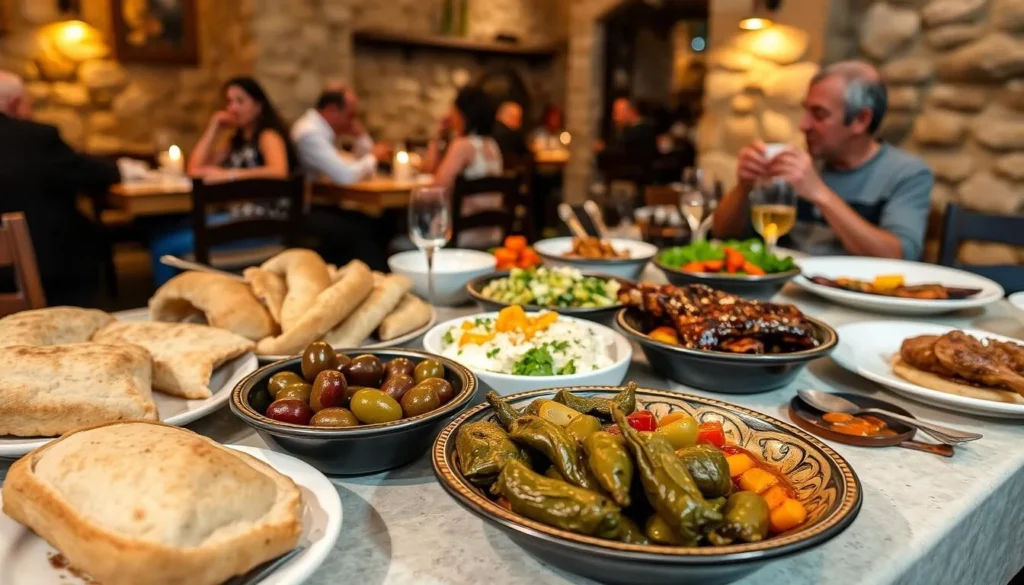
There are no restaurants within Nimrod Fortress National Park itself, so it’s advisable to bring water and snacks for your visit. However, the surrounding Golan Heights region offers excellent dining options featuring local cuisine influenced by Druze, Arab, and Jewish traditions.
Local Specialties to Try
- Druze Pita: Paper-thin bread baked on a saj (dome-shaped griddle) and stuffed with labneh (strained yogurt) or za’atar (herb mix)
- Golan Heights Wines: Award-winning local wines from the region’s vineyards
- Majdal Shams Apples: The area is famous for its apple orchards, with many products made from local apples
- Olive Oil: Locally produced olive oil with a distinctive flavor
- Golan Heights Beef: The region is known for high-quality beef from cattle raised on the lush pastures
Dining Options Near Nimrod Fortress
Restaurants
- Dag Al HaDan: Located at Kibbutz Dan, this restaurant serves fresh fish raised in the Dan River springs
- Dubrovin Farm Restaurant: Farm-to-table dining experience with local ingredients
- Auberge Shulamit: Fine dining in Rosh Pinna with a focus on Galilean cuisine
- Druze Villages: Majdal Shams and other Druze villages offer authentic local cuisine in family-run restaurants
Cafés & Quick Bites
- Kofi Annan: A play on words, this café in Majdal Shams offers coffee and light meals
- Café Nimrod: Small café near the fortress entrance with basic refreshments
- Roadside Fruit Stands: During harvest seasons, local farmers sell fresh produce along the roads
- Kibbutz Dining Halls: Some kibbutzim open their dining halls to visitors, offering authentic Israeli meals
Picnic Tip: Consider bringing a picnic to enjoy at one of the designated areas near the fortress. The panoramic views make for an unforgettable dining experience. Just remember to take all trash with you when you leave.
Attractions, Sightseeing & Activities
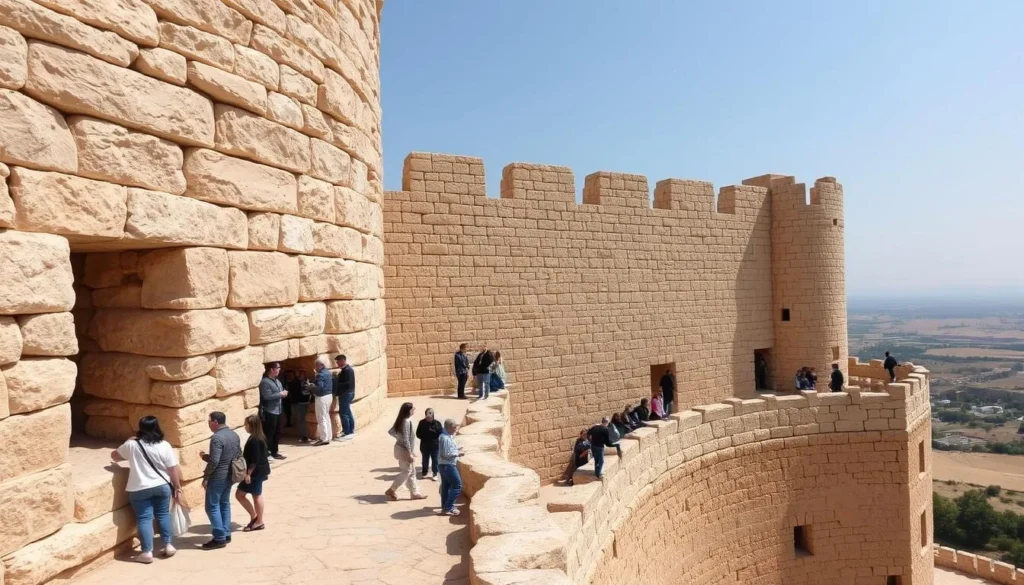
Nimrod Fortress National Park offers a fascinating journey through medieval military architecture and stunning natural landscapes. Here are the must-see attractions and activities within the fortress:
Must-See Features of Nimrod Fortress
The Northwest Tower
One of the first structures built at the fortress, featuring impressive Arabic inscriptions and a gate that has survived earthquakes. Look for the opening leading to a cistern and the secret passage that leads outside the northern wall.
The Southwest Tower
Offering breathtaking panoramic views of the Golan Heights, Hula Valley, and Galilee region from an elevation of 815 meters. Explore the interior hall with its well-preserved embrasures (arrow slits) and narrow staircases.
The Beautiful Tower
A semicircular defensive structure built by Sultan Baybars with an octagonal interior design. Notice the exceptional quality of construction and the strategic positioning that allowed archers to monitor approaching enemies.
The Water Reservoir
An impressive 7-meter high, 9-meter wide, and 25-meter long roofed cistern that collected rainwater. The vaulted ceiling and plastered walls showcase the engineering skills of the medieval builders.
The Donjon (Keep)
The fortress within a fortress, designed as a last line of defense with four corner towers. Climb to the top for spectacular views of Mount Hermon and the surrounding landscape.
The Secret Passage
A 27-meter long hidden corridor with a high, arched ceiling that allowed defenders to exit the fortress undetected. The passage ends at a concealed opening in the northern wall.
Activities at Nimrod Fortress
- Guided Tours: Available in several languages (check schedule at entrance)
- Photography: Countless opportunities for stunning landscape and architectural shots
- Birdwatching: The fortress attracts various bird species, including raptors
- Historical Exploration: Follow the recommended route to understand the fortress’s strategic importance
- Sunset Viewing: The fortress is particularly beautiful in the golden hour light (check closing times)
Enhance your visit with a guided tour of Nimrod Fortress and other historical sites in northern Israel.
Nearby Attractions
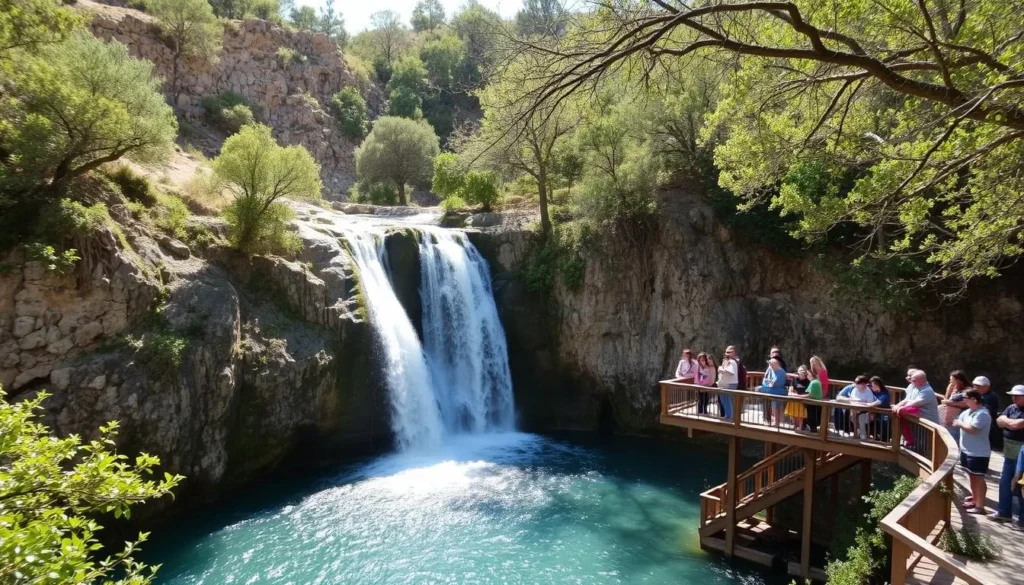
- Hermon Stream (Banias) Nature Reserve: Just 10 km away, featuring beautiful waterfalls, ancient ruins, and hiking trails
- Tel Dan Nature Reserve: Biblical archaeological site with nature trails along the Dan River
- Mount Hermon: Israel’s highest mountain, offering hiking in summer and skiing in winter
- Hula Valley Nature Reserve: World-famous bird-watching site, especially during migration seasons
- Druze Villages: Experience local culture and cuisine in nearby Druze communities
Practical Travel Tips
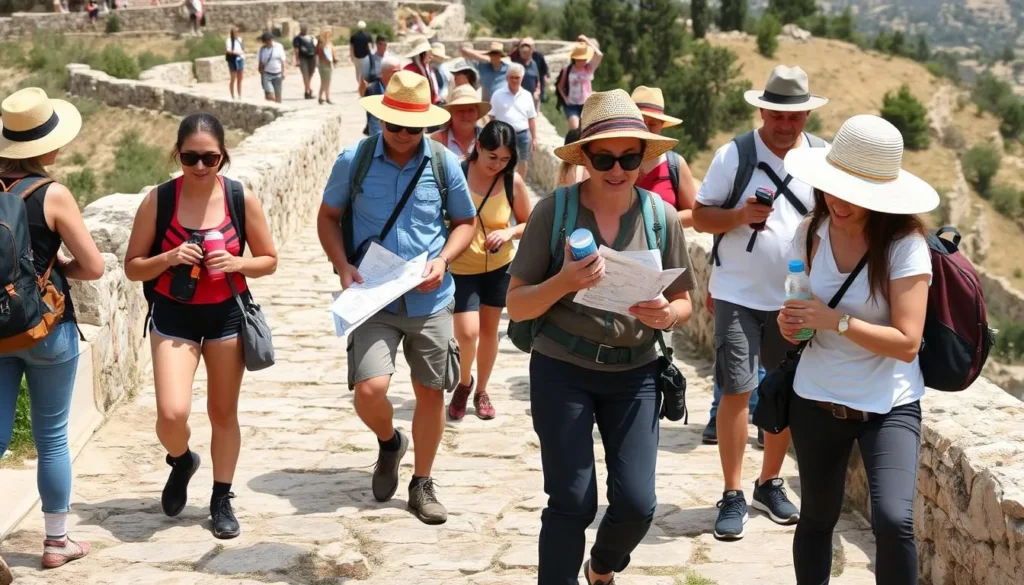
Opening Hours & Entrance Fees
- Summer (April-September): Sunday-Thursday and Saturday: 8:00 AM – 5:00 PM; Friday: 8:00 AM – 4:00 PM
- Winter (October-March): Sunday-Thursday and Saturday: 8:00 AM – 4:00 PM; Friday: 8:00 AM – 3:00 PM
- Last entry: One hour before closing time
- Entrance fee: 22 NIS (approximately $7 USD) per adult
- Israel Pass: The site is included in the Israel National Parks Pass
Facilities at the Site
- Parking: Free parking available at the western entrance
- Restrooms: Available near the entrance
- Visitor Center: Provides information brochures and maps
- Gift Shop: Small shop selling souvenirs and refreshments
- Picnic Areas: Designated spots for picnicking
- Shade: Limited in the main fortress area, so bring sun protection
Safety & Etiquette
- Stay on marked paths: The fortress has steep drops and uneven surfaces
- Wear appropriate footwear: Sturdy shoes with good grip are essential
- Bring water: Especially important during warmer months
- Respect the site: As a historical monument, climbing on walls or removing stones is prohibited
- Weather awareness: Check forecasts before visiting; the fortress is exposed to elements
- Security: Despite its proximity to borders, the area is generally safe for tourists
Accessibility Note: Most of Nimrod Fortress involves uneven terrain, steps, and narrow passages, making it challenging for visitors with mobility limitations. The Southwest Tower area is partially accessible via a modern service road, but most of the fortress requires navigating medieval pathways.
How Much Time to Allow
Plan to spend 2-3 hours exploring Nimrod Fortress thoroughly. The site covers a large area, and there’s much to discover in each section. If you’re particularly interested in medieval architecture or photography, you might want to allow additional time.
Cultural Insights & Historical Background

Understanding the rich history of Nimrod Fortress enhances the visitor experience. Here’s what makes this site culturally and historically significant:
Historical Timeline
- 1227-1230 CE: Initial construction by Al-Aziz Uthman, nephew of Saladin and Ayyubid governor of Damascus, to guard against Crusader threats
- 1260: Damaged by Mongols who captured the fortress
- 1260-1277: Major expansion under Mamluk Sultan Baybars and his governor Bilik
- Post-1291: After the end of the Crusader era, the fortress lost its strategic importance
- 15th century: Used as a prison during Ottoman rule
- 16th century: Abandoned and left to the elements
- 1759: Significantly damaged by a major earthquake
- 20th century: Archaeological excavations and preservation efforts begin
Cultural Significance
The fortress represents a fascinating blend of cultural influences:
Architectural Elements
- Ayyubid Military Design: The original fortress showcases Islamic military architecture
- Mamluk Expansions: Later additions reflect Mamluk architectural styles
- Herodian-Style Masonry: Some stonework resembles ancient Herodian building techniques
- Arabic Inscriptions: Beautiful calligraphy commemorating the builders
Name Origins
- Original Name: Qal’at al-Subeiba (“Castle of the Large Cliff”)
- Current Name: Named after the biblical figure Nimrod by local Druze in the 19th century
- Hebrew Name: Mivtzar Nimrod (“Nimrod’s Fortress”)
- Later Arabic Name: Qal’at Namrud (“Nimrod’s Castle”)
The Fortress in Context
Nimrod Fortress played a crucial role in the complex political landscape of the medieval Middle East:
- It guarded a major access route to Damascus against armies coming from the west
- It was part of a defensive network protecting Muslim territories from Crusader incursions
- The fortress demonstrates the shifting power dynamics between Ayyubids, Mamluks, Mongols, and Crusaders
- Today, it stands in the Golan Heights, an area with its own complex modern geopolitical status
Ready for Your Nimrod Fortress Adventure?

Nimrod Fortress National Park offers a unique blend of breathtaking natural beauty, fascinating medieval architecture, and rich historical significance. Perched dramatically on the slopes of Mount Hermon, this massive fortress provides not only a glimpse into the region’s complex past but also some of the most spectacular panoramic views in all of Israel.
Whether you’re a history enthusiast, photography lover, or outdoor adventurer, this magnificent 13th-century stronghold deserves a place on your Israel itinerary. With proper planning and preparation, your visit to Nimrod Fortress will be an unforgettable journey through time, where ancient stones tell stories of sultans, soldiers, and the shifting tides of power in the medieval Middle East.
As you stand atop the donjon, gazing across the Golan Heights with the same strategic view that medieval defenders once monitored, you’ll understand why this remarkable fortress has captivated visitors for centuries. Pack your comfortable shoes, bring your camera, and prepare to be amazed by one of Israel’s most impressive historical treasures.
Plan Your Visit to Nimrod Fortress National Park
Ready to explore this magnificent medieval fortress? Start planning your trip today!
The above is subject to change.
Check back often to TRAVEL.COM for the latest travel tips and deals.



